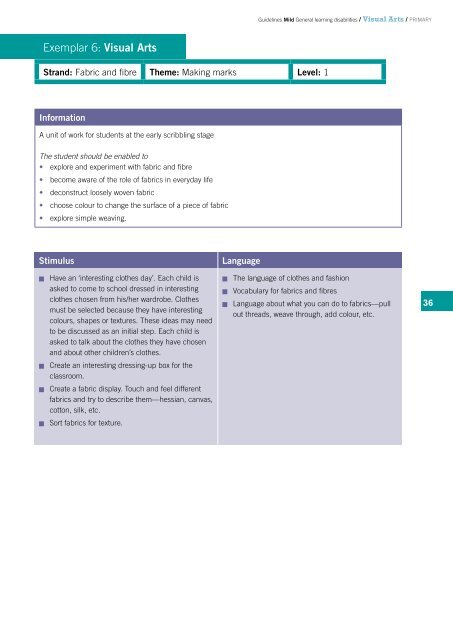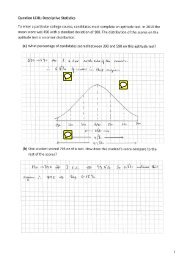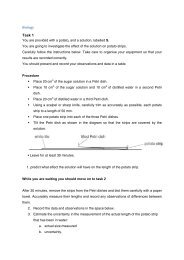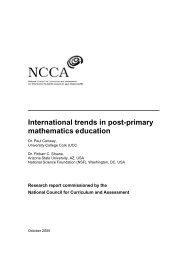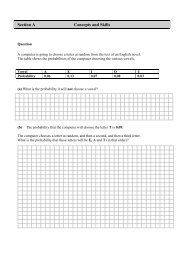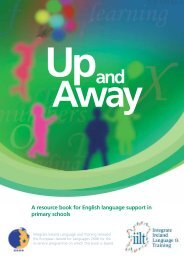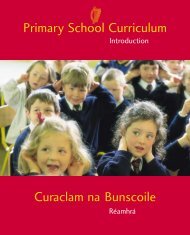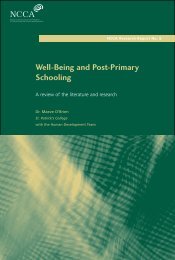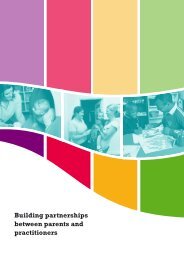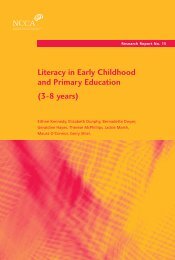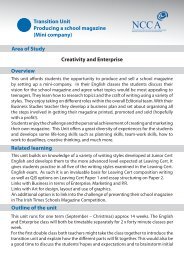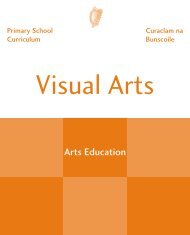Visual Arts - NCCA
Visual Arts - NCCA
Visual Arts - NCCA
You also want an ePaper? Increase the reach of your titles
YUMPU automatically turns print PDFs into web optimized ePapers that Google loves.
Strand: Fabric and fibre Theme: Making marks Level: 1<br />
Information<br />
A unit of work for students at the early scribbling stage<br />
The student should be enabled to<br />
• explore and experiment with fabric and fibre<br />
•<br />
•<br />
•<br />
•<br />
become aware of the role of fabrics in everyday life<br />
deconstruct loosely woven fabric<br />
choose colour to change the surface of a piece of fabric<br />
explore simple weaving.<br />
Stimulus Language<br />
n<br />
n<br />
n<br />
n<br />
Exemplar 6: <strong>Visual</strong> <strong>Arts</strong><br />
Have an ‘interesting clothes day’. Each child is<br />
asked to come to school dressed in interesting<br />
clothes chosen from his/her wardrobe. Clothes<br />
must be selected because they have interesting<br />
colours, shapes or textures. These ideas may need<br />
to be discussed as an initial step. Each child is<br />
asked to talk about the clothes they have chosen<br />
and about other children’s clothes.<br />
Create an interesting dressing-up box for the<br />
classroom.<br />
Create a fabric display. Touch and feel different<br />
fabrics and try to describe them—hessian, canvas,<br />
cotton, silk, etc.<br />
Sort fabrics for texture.<br />
n<br />
n<br />
n<br />
Guidelines Mild General learning disabilities / <strong>Visual</strong> <strong>Arts</strong> / PRIMARY<br />
The language of clothes and fashion<br />
Vocabulary for fabrics and fibres<br />
Language about what you can do to fabrics—pull<br />
out threads, weave through, add colour, etc.


